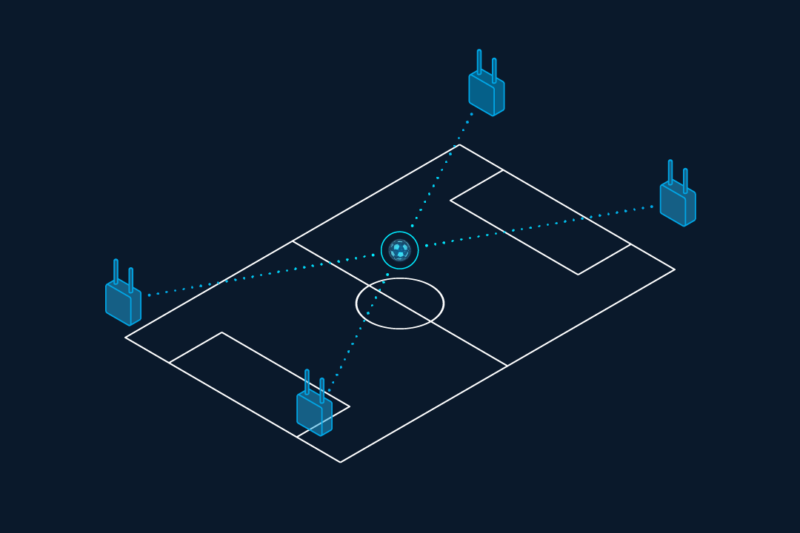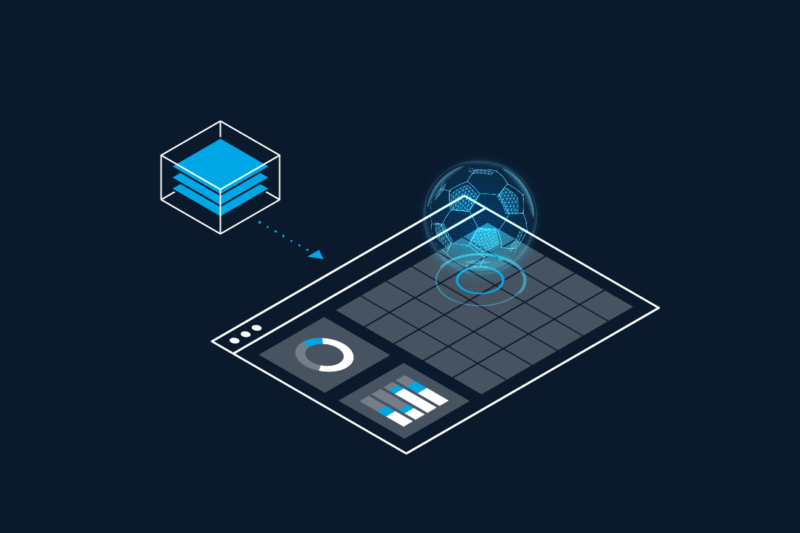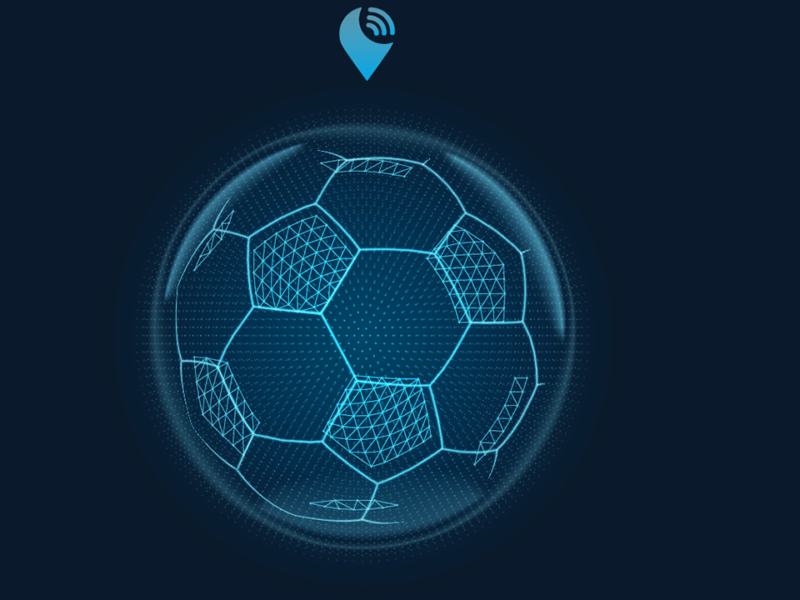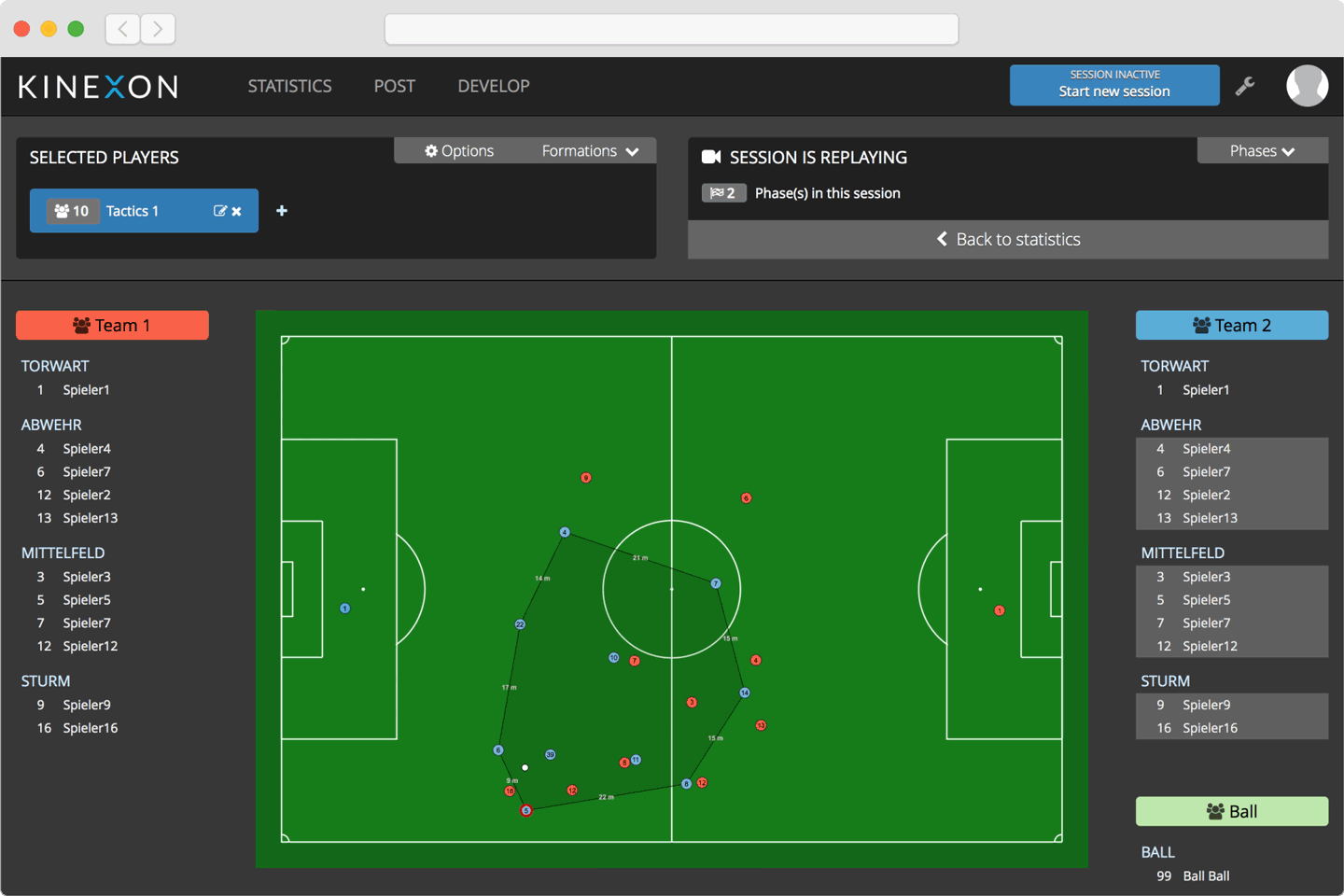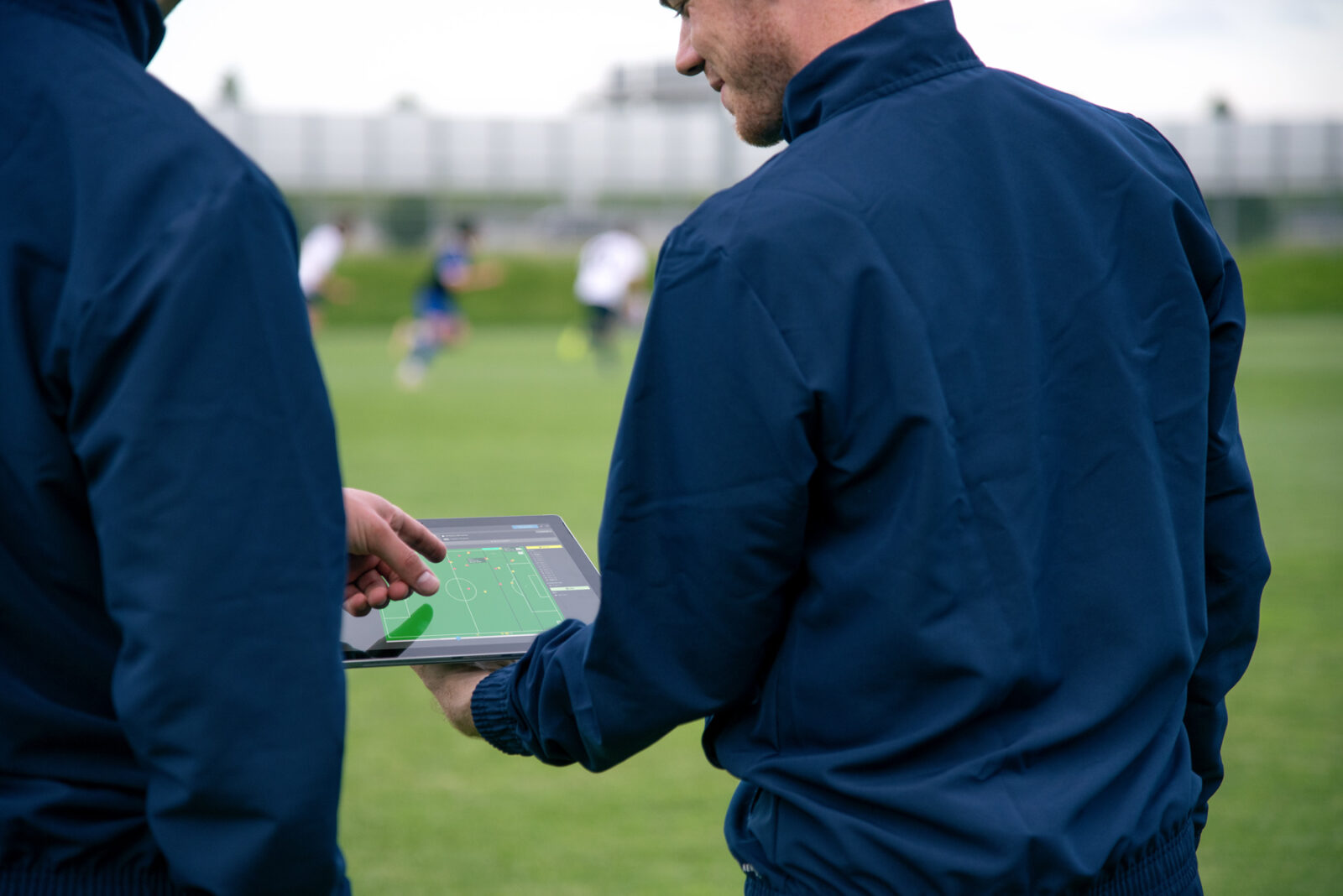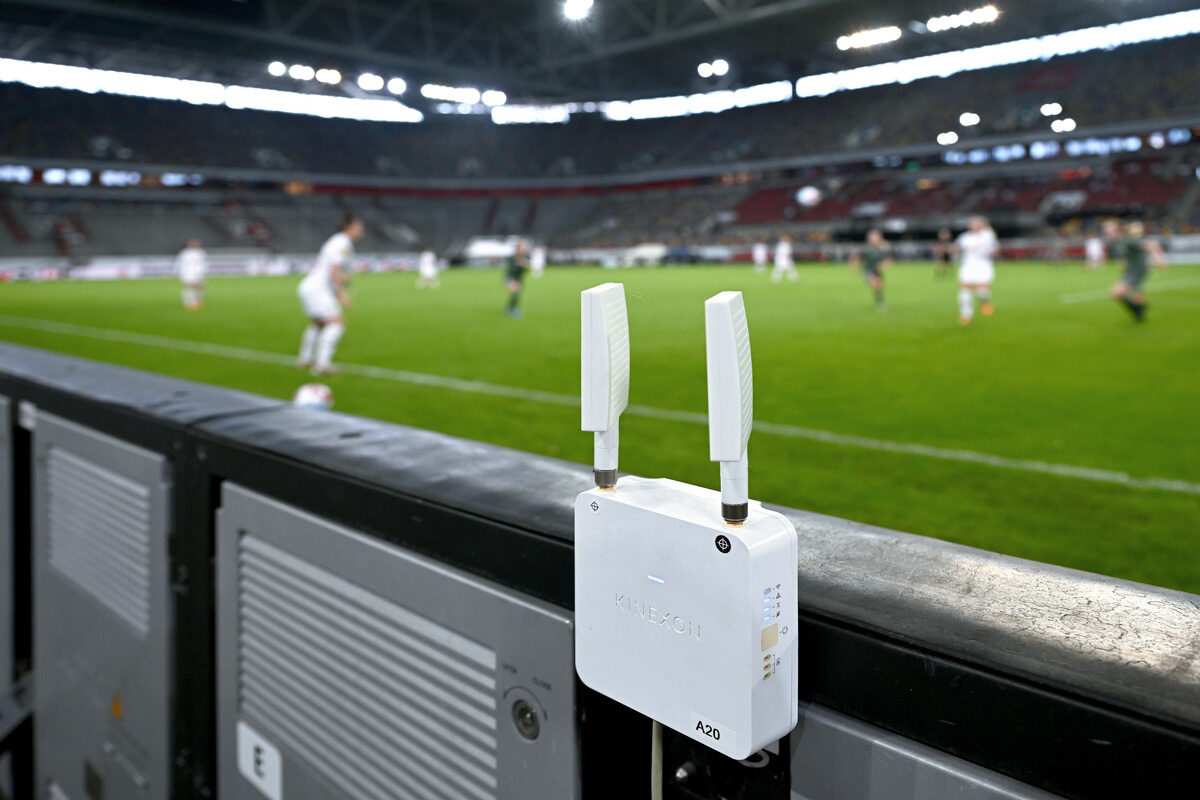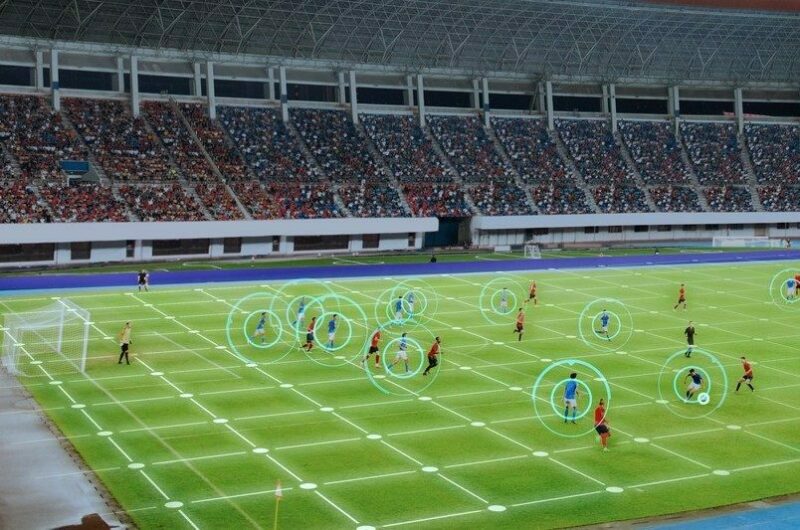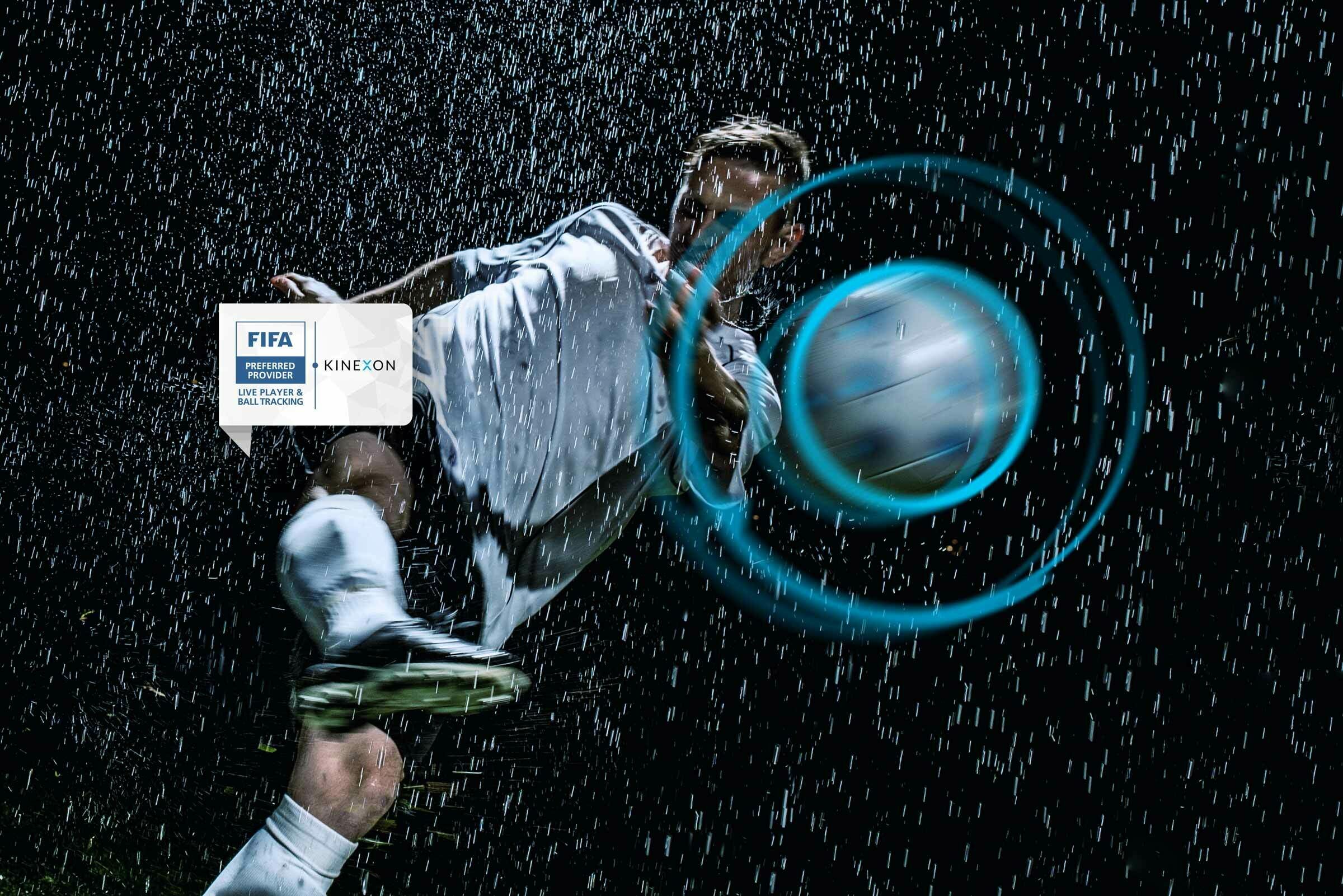
Live Ball Tracking
Capture and Analyze the Ball’s Position and Inertial Data in Real-Time
KINEXON is the only ball tracking provider to offer sensor technology that can be integrated into official football & handball match balls. In real-time, positions and inertial data (impacts and spin rate) of the ball can be detected with accuracy down to the centimeter. Read more below:
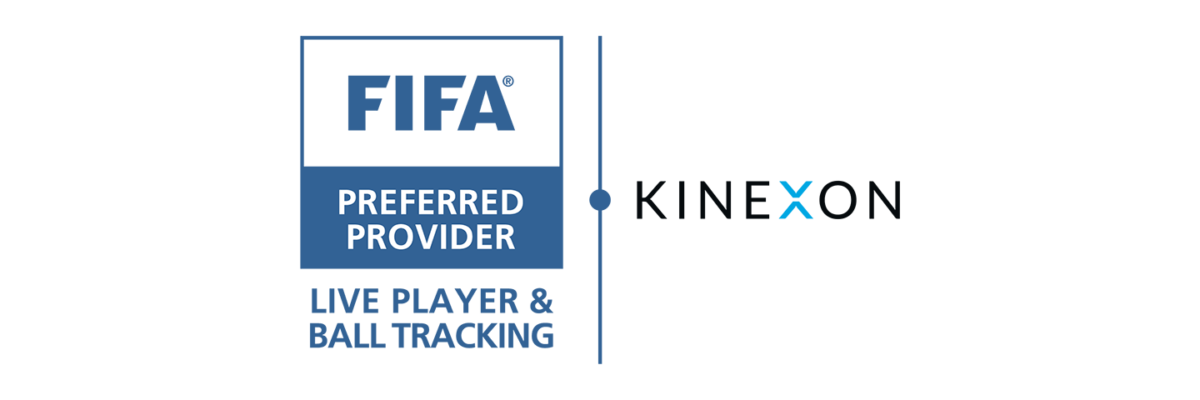
KINEXON Is "FIFA Preferred Provider Live Player & Ball Tracking"
Player and ball tracking from KINEXON has been successfully validated in the EPTS tests of the FIFA Quality Programme. As of July 2022, this makes KINEXON the world’s first technology provider with the title “FIFA Preferred Provider Live Player & Ball Tracking”. Learn more here.

What Is Ball-Tracking?
Ball tracking refers to the recording of the position and tracking of all movements of the ball. KINEXON relies on a local positioning system (LPS) for this purpose.
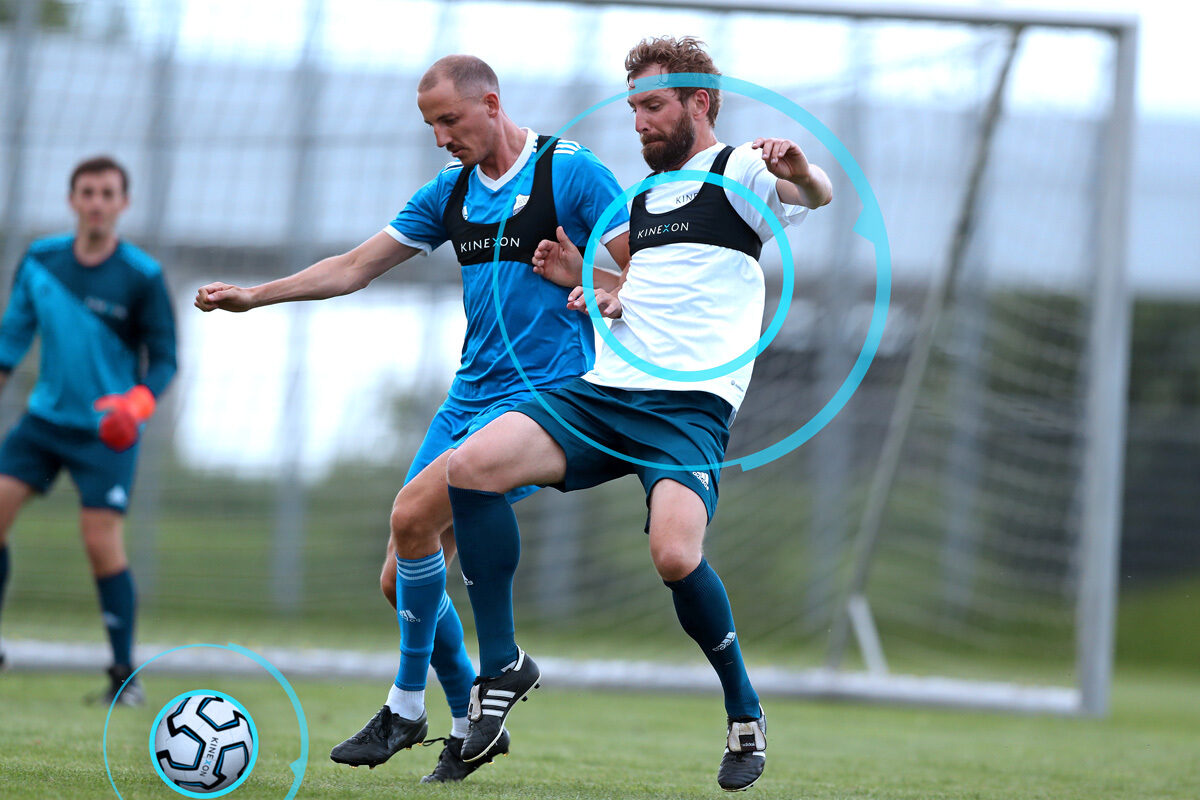
How Ball Tracking Is Being Used in Professional Sports
The LPS is based on UWB technology and thus offers stable and centimeter-accurate real-time tracking data both indoors and outdoors. In addition to balls, players can also be tracked in real-time and their performance analyzed live.
For the digital recording of ball movements and positions, a UWB tracking sensor from KINEXON is integrated into the official match balls. Such connected balls are currently used in professional football and handball.
The data generated by this innovation is already helping coaches with performance or tactical analysis, media with live reporting and club media with marketing. Other applications — such as supporting referees — are also already possible.
How Does Ball Tracking Work?
Tracking match balls requires an LPS network around the pitch, a ball sensor and real-time data transmission and processing
What Is Connected Ball Technology?
In 2022, “Connected Ball Technology” became known as an application variant of KINEXON’s ball tracking, which was developed in cooperation with adidas and FIFA.
Here, the ball sensor from KINEXON is integrated inside the ball via a suspension system — developed and patented by adidas. You can read more about the application of Connected Ball Technology here.

How Does a Ball Sensor Work?
Sensors are technical components that detect and measure physical or chemical properties. Basically, all sensors that are integrated into a ball can be called a “ball sensor.”
In theory
…there is a choice of different sensors for this, which record different data accordingly. Sensors can be used, for example, to record air pressure, humidity, position, movement, and much more.
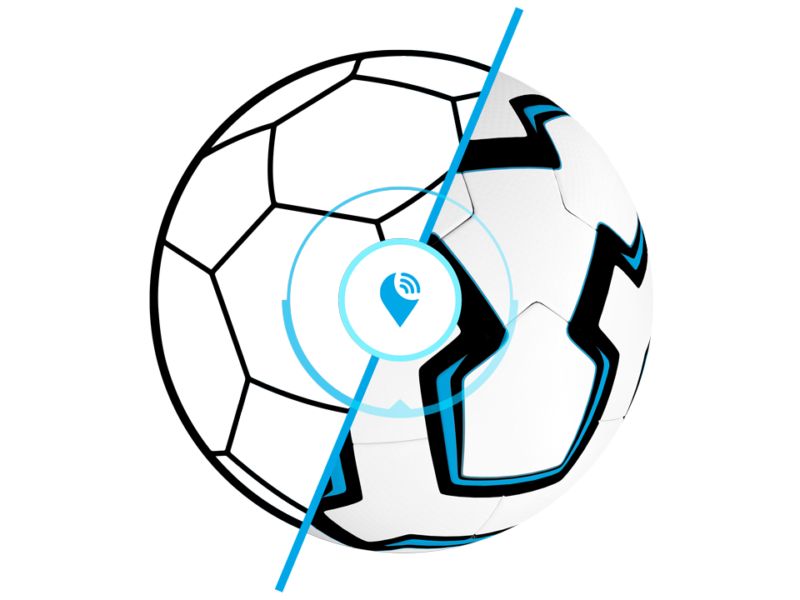
In practice
…KINEXON uses a combination of ultra-wideband (UWB) and inertial measurement unit (IMU) for its ball sensors. This means that all movements and positions of the ball can be recorded and measured in real-time.
This Is the Ball Sensor From KINEXON

In 2022, connected football match balls with KINEXON sensor inside have been officially approved by FIFA. These are the first officially approved connected balls for official football games. What makes this ball sensor technology unique:
- The sensor combines UWB and IMU technology and is networked with a Local Positioning System around the pitch to provide “through the air” raw data on position, movement and touch in real-time.
- The sensor is integrated in a closed, extremely robust unit, which protects the hardware from all external influences of the sport — without limiting functionality.
- This exclusive system keeps the ball sensor safe and operational even under the rigorous FIFA requirements and standards.
What Advantages Does a Ball Sensor Offer over Camera Tracking?
One big advantage of a sensor integrated into the ball is the data quality. This is because there are no disruptive factors that affect the optical tracking with the sensor. A second advantage is a latency of only 20 ms — which means for the human eye: real-time.
Which Official Match Balls Are Available with Integrated Sensors?
In theory, ball sensors from KINEXON can be integrated into every kind of ball. In practice, KINEXON works together with leading ball manufacturers to equip ball models of professional leagues with the sensor technology.
The important takeaway here is that the ball’s rolling and flight characteristics must not be altered in any way, nor must its weight and haptic sensation.

Current, Official Match Balls with Integrated KINEXON Sensor:
The following models of official footballs and handballs are currently available with a KINEXON tracking sensor:
- Derbystar “Brillant APS iBall”
- Select “Brillant Super iBall”
- Select “Ultimate iBall” (size 2 + 3)
- More to be announced soon — click here to request another model

What Is Ball Data?
The generic term“ball data” covers all the data that is captured by the ball’s integrated UWB and IMU sensors. At first, this is raw position data such as x, y and z coordinates.
With the help of algorithmic calculations by a processor, the data is converted into key sports science metrics.
Additionally, the IMU data delivers high-resolution data on the ball’s inertial data, such as spin rate and impact force. Metrics could be spin rate (unit: rpm), touch force (unit: G) and others.
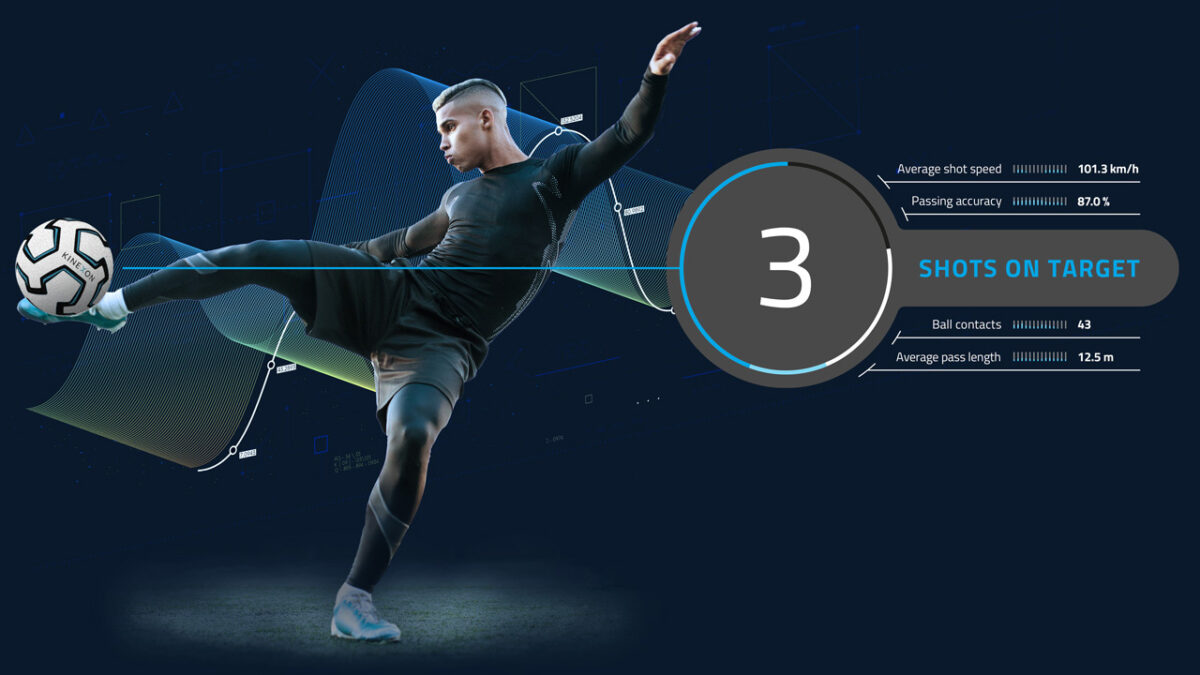

Get to Know Now: xBall From KINEXON
Whether “iBall” from Derbystar/SELECT or match balls from other manufacturers: Ball tracking from KINEXON can be integrated in all footballs and handballs. Get to know our product incl. KINEXON Sports App now!
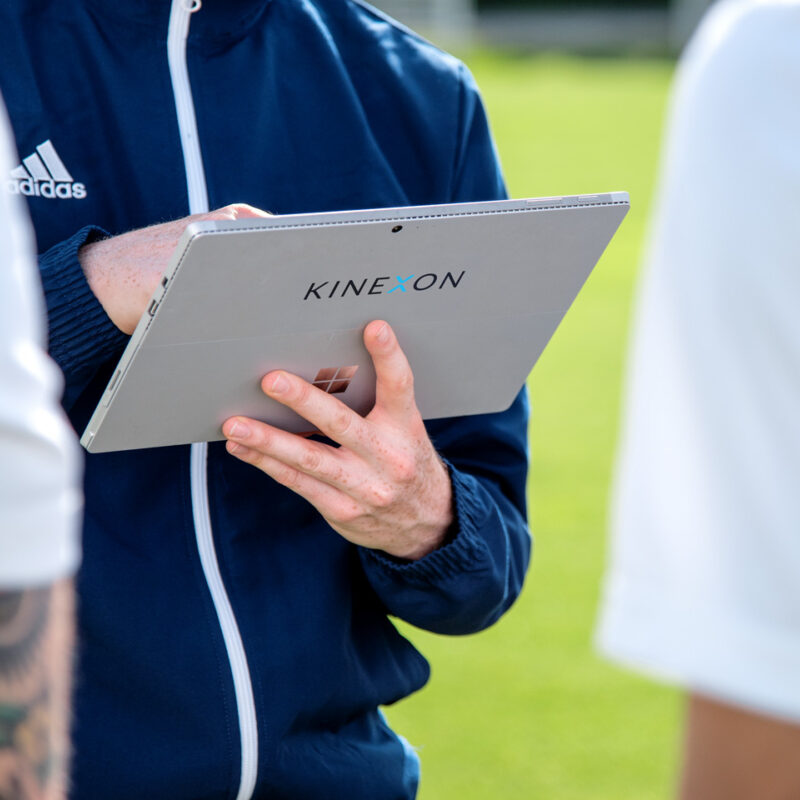
Previous Webinars
Want to learn how ball tracking is used in training? Have a look at our recent webinars:
- “Data with Context: How Ball Data Turns Subjective Impressions into Objective Measurements”
(Aug 17, 2022)
Watch On-Demand
- “The Impact of Ball Data on Physical, Tactical and Technical Performance Evaluation”
(Aug 31, 2022)
Watch on-demand

